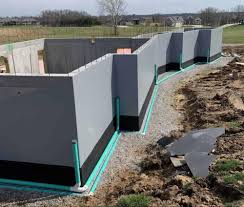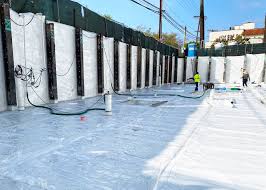📞+91 97170 45819 ✉️ omrwaterproofing6644@gmail.com 🏠Bahadurgarh Rd, Mithai Pul, Teliwara, Sadar Bazaar, Delhi, 110006
New Construction Waterproofing
Waterproofing in new construction is a critical step to protect buildings from water damage, ensure structural integrity, and extend the lifespan of the structure. It involves applying materials and systems designed to prevent water infiltration in areas vulnerable to moisture, such as foundations, basements, roofs, walls, and bathrooms.
During new construction, waterproofing is easier and more cost-effective compared to retrofitting existing structures. Proper waterproofing starts at the design stage and continues through site preparation, material selection, and installation.
Key areas for waterproofing in new construction include:
Foundations and Basements: These are most prone to water ingress from groundwater or rain. Waterproof membranes or coatings are applied on exterior foundation walls and floors to prevent seepage. Drainage systems like French drains are often installed to direct water away from the foundation.
Roof Waterproofing: Roofs are exposed to direct rainfall and must be sealed using waterproof membranes, coatings, or roofing materials like bitumen or modified asphalt sheets. Proper slope and drainage systems help prevent water pooling.
Bathrooms and Wet Areas: These spaces require waterproofing under tiles and around fixtures to avoid leaks and mold growth. Liquid-applied membranes or sheet membranes are commonly used here.
Common waterproofing materials for new construction include:
Cementitious coatings, which are easy to apply and bond well to concrete.
Bituminous membranes, offering excellent moisture resistance.
Liquid-applied membranes, providing seamless protection.
Synthetic membranes, such as PVC or TPO sheets.
Installation and quality control during waterproofing are vital to prevent failures. Surfaces must be clean, dry, and properly prepared before applying waterproofing materials. Joints, corners, and penetrations need special attention.
In summary, waterproofing in new construction is essential to protect the building from water damage, enhance durability, and reduce maintenance costs. Investing in quality waterproofing upfront ensures long-term performance and peace of mind.




Get expert waterproofing solutions for your property.
+91 9717045819
Copyrights 2025| OMR Waterproofing| Terms & Conditions | Privacy Policy
Useful Links
📍 We Serve
Delhi
Ghaziabad
Meerut
Noida
Mumbai
Haryana
Punjav
Rajasthan
Bihar
Hyderabad
Goa
Chennai
Bangaluru
Hubli
Kashmir
OMR Waterproofing Pvt ltd
GSTIN : 09AAECO6620P1ZX
